Like Beads on a String

Did you know that it’s possible to connect two or more Launchpad Batteries together, like beads on a string, to boost their power within a circuit?
Novel in design, our 3V CR2032 Launchpad Battery is a safer, more learner-friendly option than traditional coin batteries! Besides making our Launchpad Battery harder to swallow, these wing-like metal tabs enable easier gripping, sketching, prototyping, and connecting!
Similar to stacking two traditional coin cell batteries (one on top of the other), the metal wings of Launchpad Batteries may be overlapped to merge their individual voltages. In most cases, doing so will result in the increased brightness of LEDs and extended battery life.
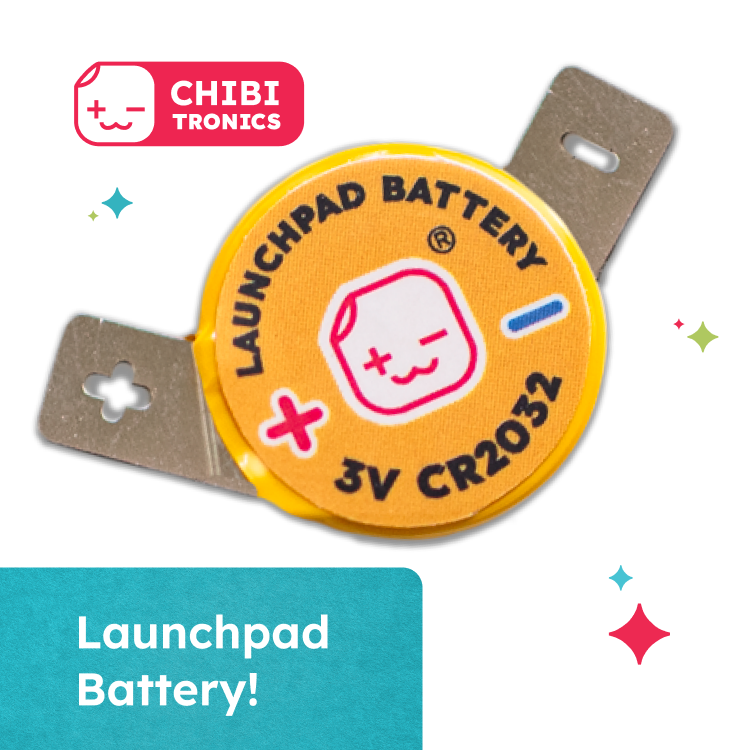
So, while they may look different, Launchpad Batteries can be easily joined to increase their total voltage!
Combining batteries to boost the voltage in your circuit is a useful thing to do if your batteries no longer contain a complete charge, or if you’re working with power-hungry circuits that use a combination of colored LEDs and Animating LEDs.
Overlapping two fresh batteries, for example, would double the total voltage available in your circuit from 3 to 6 volts.


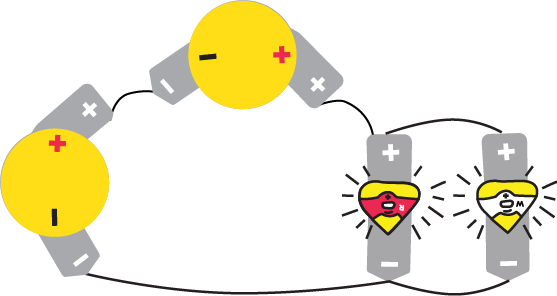
The key is to join the batteries so they are connected one after the other like beads on a string. When the positive wing of one battery comes in contact with the negative wing of another battery, this is called connecting the batteries in series.
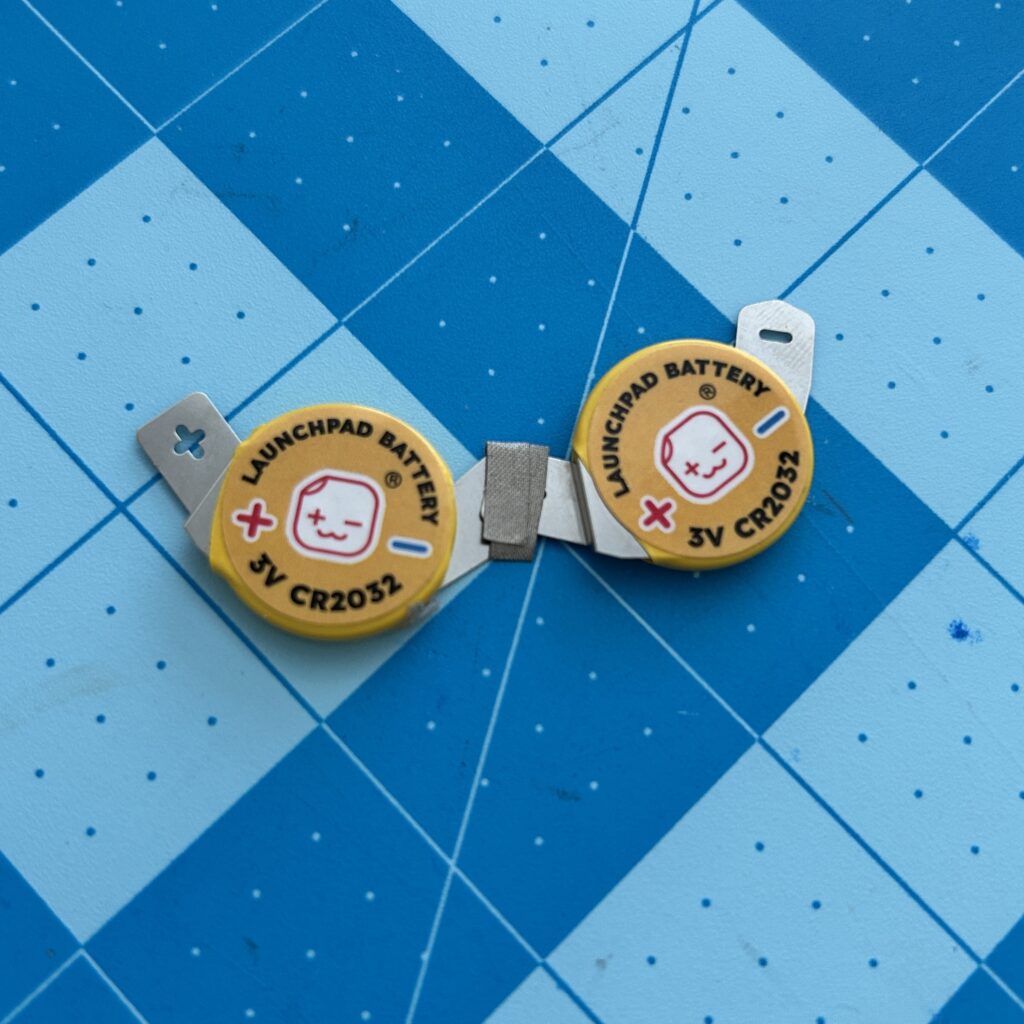
Connecting two Launchpad Batteries in series, by linking the positive wing (or terminal) of one battery to the negative wing of the next, is especially useful for powering circuits that contain a variety of multi-colored LEDs.
To ensure a more robust physical and electrical connection, it’s a good idea to secure the overlapped wings with Conductive Fabric Tape or Conductive Fabric Tape Patches.

But, if you’d prefer to treat the batteries as a switching mechanism, you may choose to leave the overlapping contacts loose.
Once you have the batteries connected in series, you can treat them like one large battery with the negative tab on one battery and the positive tab on the other battery. This will allow you to connect more LEDs in parallel, like the example circuits below.
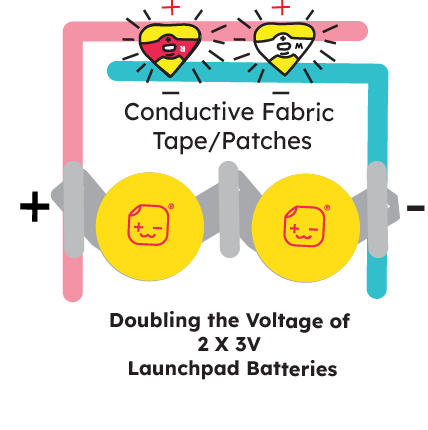
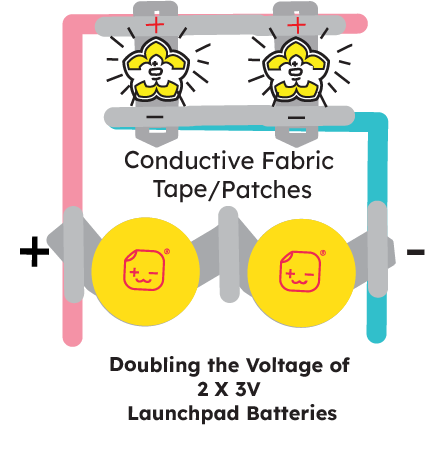
View Video Demonstration
Tips for Working with Alligator Clips & Through-Hole LEDs
Launchpad Batteries, in singles or connected in series, have sturdy arms that are easily securable with conductive tapes or alligator clips! This makes it easier to prototype and experiment with different power configurations.
This can also help to make scientific concepts easier to visualize and understand. In the example below, the circuit powered by two Launchpad Batteries connected in series is much brighter. This is especially true for the blue and white LEDs that have higher power requirements.


Another concept that might be illustrated with two Launchpad Batteries in series is the way that Through-Hole LEDs behave both with and without resistors (or Resistor Stickers).
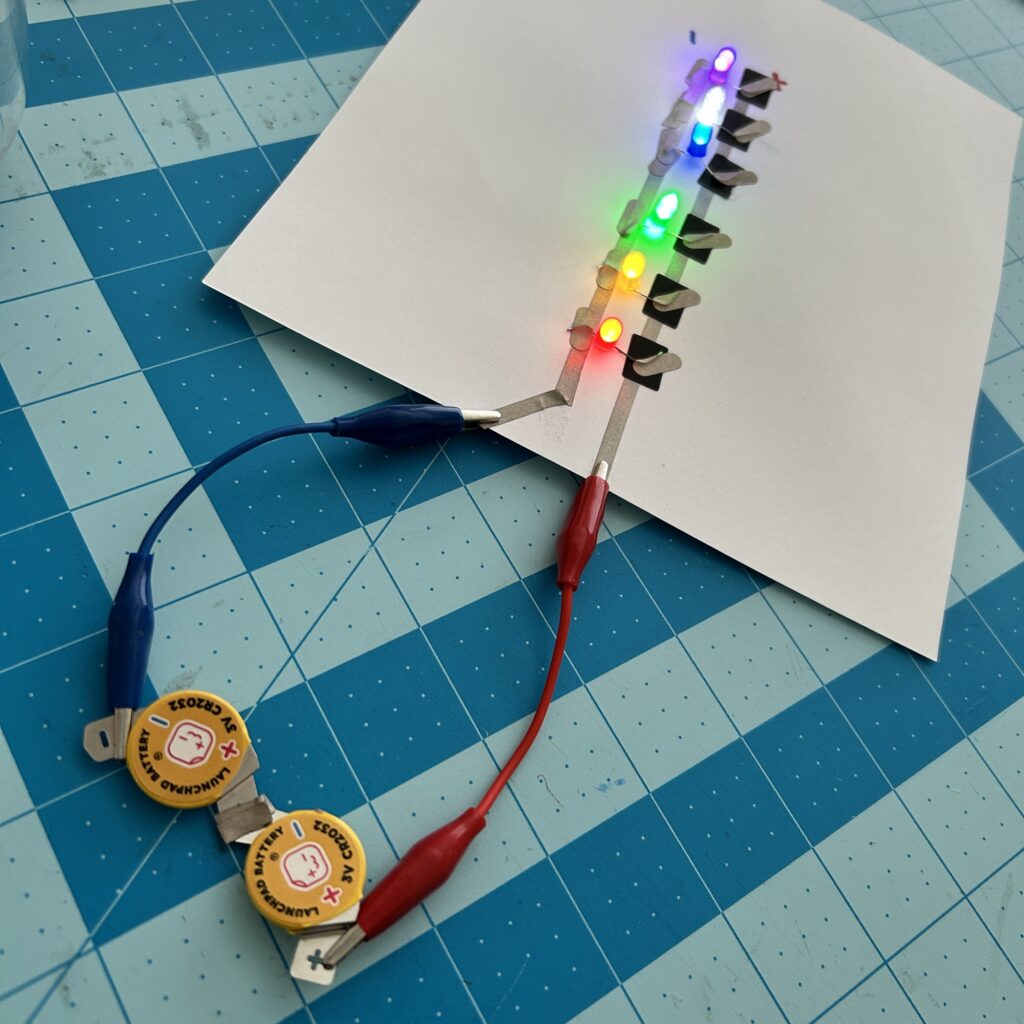
If you are working with Through-Hole LEDs in parallel and Launchpad Batteries in series, it’s important to use resistors such as our Resister Stickers, to protect the bulbs and balance out the flow of current going to each LED.
Whereas a white Through-Hole LED does not always need a resistor when connected to a single Launchpad Battery, doubling the voltage can result in exceptionally bright white lights that may cause the batteries to drain faster.
It is also possible to demonstrate the concept of how switches work with a pair of Launchpad Batteries and alligator clips. By leaving the overlapped wings loose, free from conductive tape (see images below), they may be easily separated to open the circuit and turn it off. Then, to close the circuit, to turn it back on, they may be brought back into contact with one another.
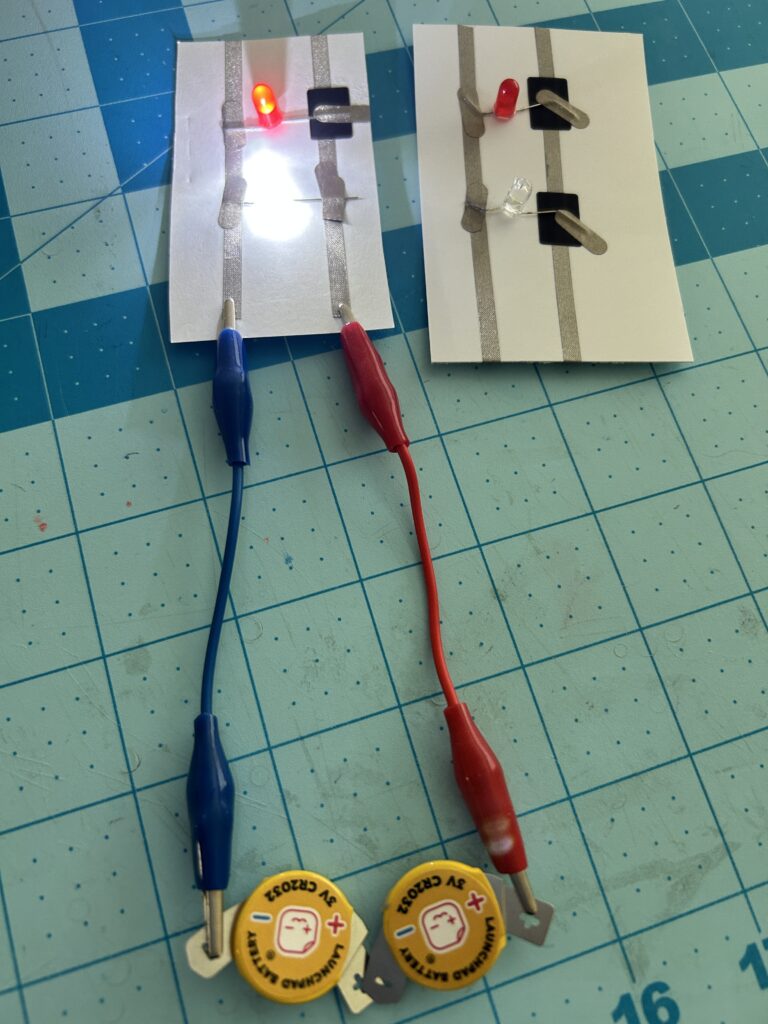
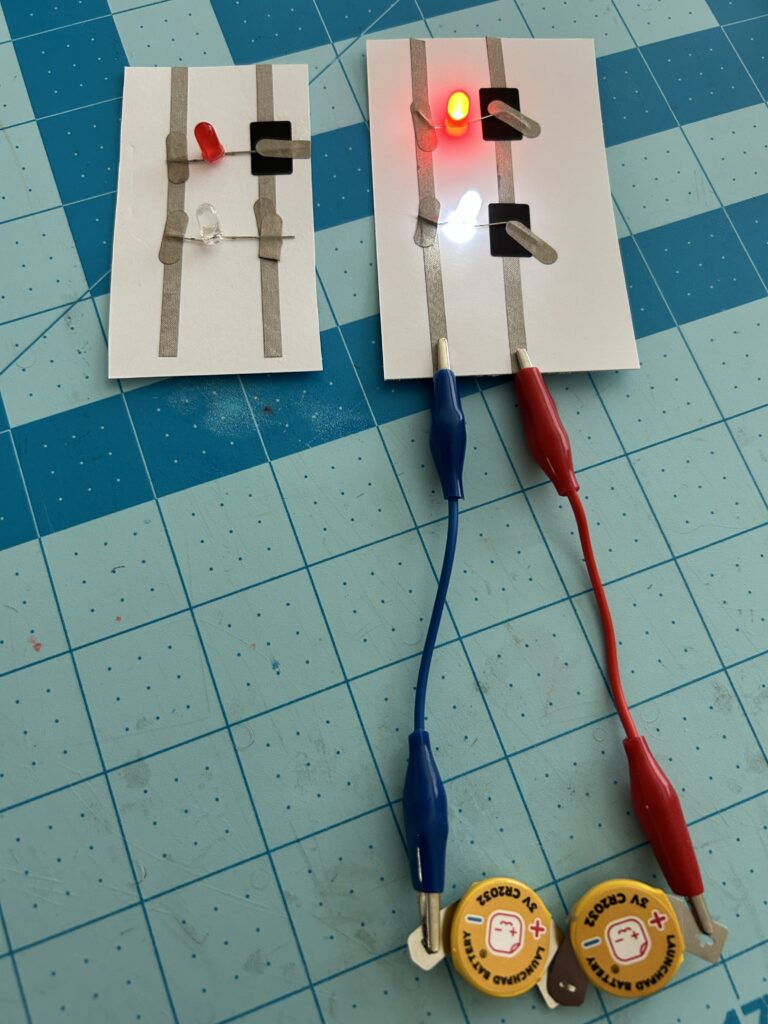
Learn More:
To learn more about Launchpad Batteries, visit Introducing the NEW Chibitronics Launchpad Battery!
To learn more about Through-Hole LEDs or Resistor Stickers, visit How to Use Chibitronics Resistor Stickers.
